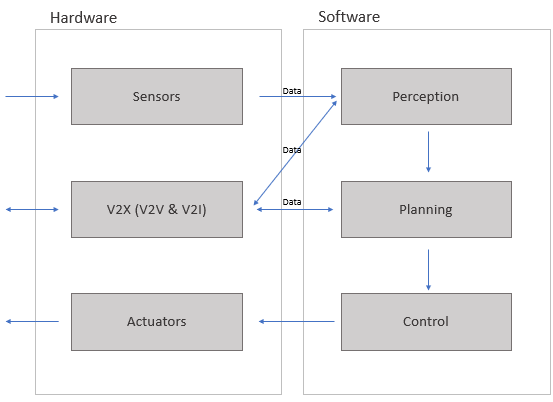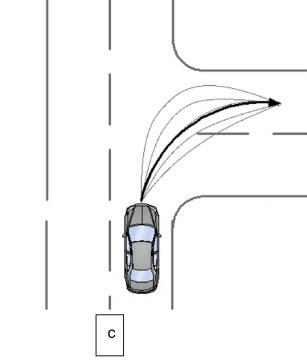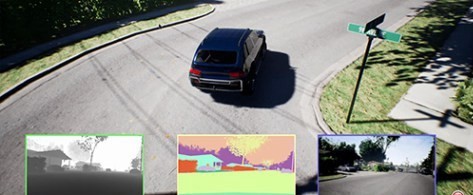- An Introduction to Self-Driving Car
- Machine Learning Algorithms and Techniques in Self-Driving Cars
- Localization for Self-Driving Cars
- Perception for Self-Driving Cars
- Hardware and Software Architecture of Self-Driving Cars
- Sensor Fusion for Self-Driving Car
- Self-Driving Car Path Prediction and Routing
- Self-Driving Car Decision-Making and Control System
- Cloud Platform for Self-Driving Cars
- Dynamic Modeling of Self-Driving Car
- Safety of Self-Driving Cars
- Testing Methods for Self-Driving System
- Operating Systems of Self-Driving Cars
- Training a YOLOv8 Model for Traffic Light Detection
- Deployment of Self-Driving Cars
Deployment of Self-Driving Cars | Self Driving Cars
The transportation system is about to be revolutionized by self-driving cars. Hundreds of companies all around the world have been working on autonomous driving. Deployment of a safe and reliable system is more difficult since self-driving cars include several new applications and technical challenges. As it is a matter of life, a self-driving car must be tested in different conditions and environments before deploying the real road. Several steps of deploying a self-driving car are given below.
System and Hardware Implementations
At the very first step, a prototype of the car needs to be built. The prototype includes hardware, sensors, and other computing systems integration. The automobile system must be built with a number of sensors that work together to address a wide range of driving conditions. Sensor fusion combines all of these signals into a comprehensible AI engine that includes perception, prediction, planning, and control. Hardware should be able to operate reliably at high temperatures, vibration, and rough movement.

Implementing Coding and Algorithms
Coding and algorithms are essential in the localization and actuation of self-driving cars. The most challenging task for the system is to create an image-based model for feature selection and prediction. To handle real-time data processing to an on-board artificial intelligence engine capable of processing and controlling the vehicle in a real-time environment. Real-time responsiveness, and prevent signal incompatibility problems, avoid obstacles are the key tasks of self-driving car systems. The algorithms are mostly used to make decisions. The algorithms are used for categorization, identification, and prediction of the upcoming movement of objects determines whether a car has to make a left turn or brake.
Training the System Algorithms
After implementing coding and algorithms in the system, the system must be trained in different environmental and road scenarios. As AI algorithms learn by training and making mistakes the car system must be trained in different situations to get the best output from it. The sensor must create a map of the environment. And make a proper decision about the situation.

Testing the System
Testing is the most important step of deployment as it is a matter of life. The testing process of self-driving cars is performed in four steps.
- Development Testing: Every component from the radar, camera, and lidar sensors to the computer hardware and software that runs on it is individually tested. After that the test being evaluated as a whole system.
- Simulation Testing: A virtual environment is created with a real-world traffic scenario to test the system output in different situations. The benefit of using simulation testing is you can run the test case multiple times and analyze how your system reacts.
- Panel Testing: Before deploying on the original road, the car is tested on a private track with inflatable pedestrians, fake obstacles, and other obstacles that may encounter on the road. If any reaction is not good as expected then it goes back to development.
- Real-World Testing: After passing all three steps the car is ready to be tested in the real world. But as the scenario of real-world traffic is more complicated the test should take place with proper care and abiding by all applicable laws, regulations, and guidelines of the city.
Challenges of Deployment
Before deploying self-driving cars in the real world some challenges must be overcome. Some most challenges are listed below.
- Passengers Experience: A safe, comfortable, and risk-free journey should be ensured to the passengers to achieve people's trust in the system of the self-driving car
- Software and Algorithm complexity: Software and Algorithms should be up to date and capable of processing large amounts of data
- Reliability: The system must achieve reliability by testing in different test cases and scenarios
- Cost: The cost must be reasonable and affordable for consumers
Conclusion
The real deployment of self-driving cars will enable a new era of automotive innovation. We all are hoping to see self-driving cars on our roads overcoming all the challenges.
Thank you for reading the article. You can comment below for any quries.
